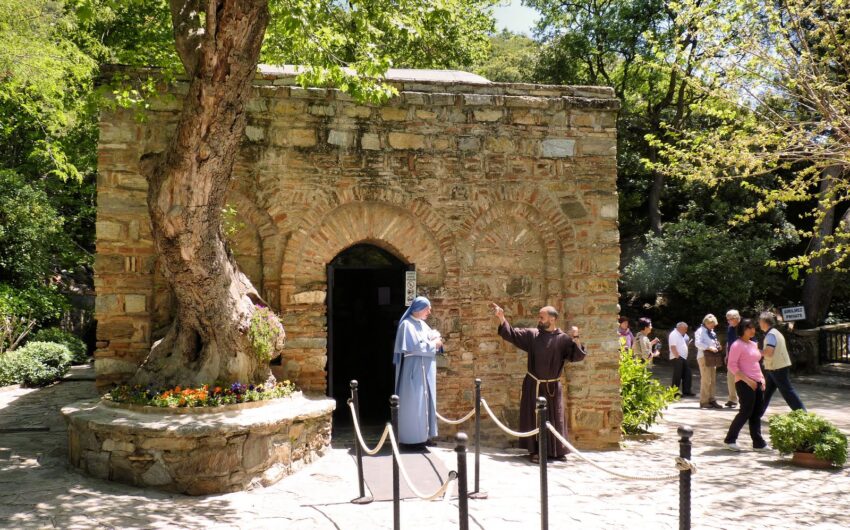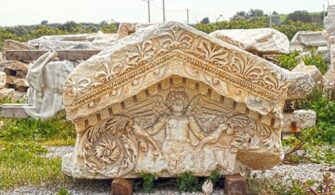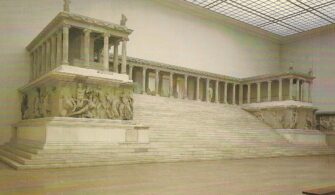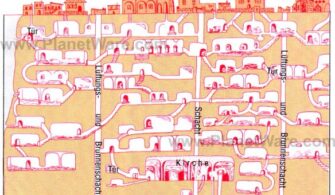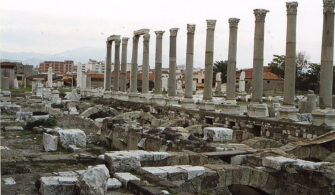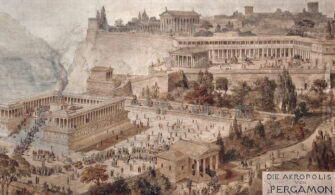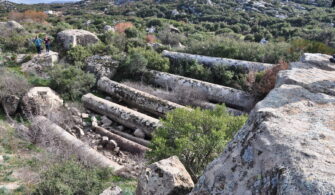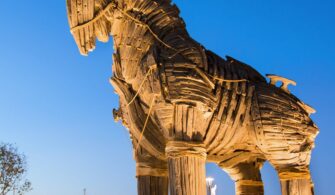Virgin Mary is considered to be the holy mother of Christianity. Virgin Mary (in Turkish Meryem Ana) also has significance for Muslims, because of Mary was the mother of Jesus Christ, one of the great prophets of Islam, called Prophet Isa.
The house of the Virgin Mary is situated on Mount Bülbül, 9 km ahead of Ephesus. The house of the Virgin Mary is close to the ancient ruins of the city of Ephesus.
It is believed that Mary may have spent her last days. The Virgin Mary remained here until she passed away. Jesus Christ asked St John, one of his disciples, to provide protection for his mother, Mary, before he died on the cross.
It is believed that based on this, St. John thought it unwise for the Virgin Mary to stay in Jerusalem, so brought her with him to Ephesus. Here she remained hidden in a cottage, surrounded by dense trees, on the outskirts of Mount Bülbül. Historians and religious experts widely agree that Saint John, Saint Paul and the Virgin Mary spent time living in the ancient city of Ephesus.
The modern history of Meryem Ana begins in the first half of 19th century on the banks of the Rhine in Germany. The house was discovered in the 19th century following the reported dreams of Catholic priestess Anne Catherine Emmerich. Emmerich also described the location of the house in his dreams. Noted and published in a book, fifty-seven years after her death; a priest read and followed the descriptions in Emmerich’s dream to discover the last resting place of the Virgin Mary.
In the penultimate chapter of the book (“The Life of the Blessed Virgin” by Anna Katharina Emmerick) we read:
“After Our Lord’s Ascension Mary lived for three years on Mount Zion (Jerusalem), for three years in Bethany, and for nine years in Ephesus, whither St. John took her soon after the Jews had set Lazarus and his sisters adrift upon the sea. Mary did not live in Ephesus itself, but in the country near it where several women who were her close friends had settled. Mary’s dwelling was on a hill to the left of the road from Jerusalem some three and a half hours from Ephesus. Narrow paths lead southwards to a hill near the top of which is an uneven plateau, some half-hour’s journey in circumference, overgrown, like the hill itself, with wild trees and bushes. It was on this plateau that the Jewish settlers had made their home. It is a very lonely place, but has many fertile and pleasant slopes as well as rock-caves, clean and dry and surrounded by patches of sand. It is wild but not desolate, and scattered about it are a number of trees, pyramid shaped, with big shady branches below and smooth trunks.”
In 1890 “The Life of the Blessed Virgin” by Anna Katharina Emmerick came into the hands of some priests who lived in Izmir. As a result of the research of these priests, the house was discovered.
[URIS id=974]
Paul VI was the first pope to visit this place in the 1960s. During his visit in the 1980s, Pope John-Paul II declared the Shrine of Virgin Mary as a pilgrimage place for Christians.
“From here in Ephesus, a city blessed by the presence of Mary Most Holy – who we know is loved and venerated also by Muslims – let us lift up to the Lord a special prayer for peace between peoples. From this edge of the Anatolian peninsula, a natural bridge between continents, let us implore peace and reconciliation, above all for those dwelling in the Land called “Holy” and considered as such by Christians, Jews, and Muslims alike: it is the land of Abraham, Isaac, and Jacob. Peace for all humanity.”
Benedict XVI, Ephesus, Wednesday, 29 November 2006
The Catholic Church has not commented on whether the house is indeed the Virgin Mary, but since the house was discovered, it regularly receives pilgrimages.
Shrine of Virgin Mary opening 08.00 in the morning and closing 17.00 PM (in January, February, March), 18.00 (in other months.
